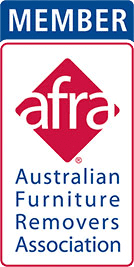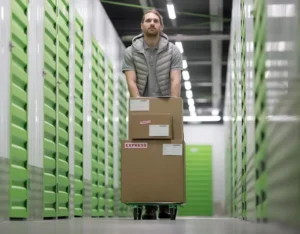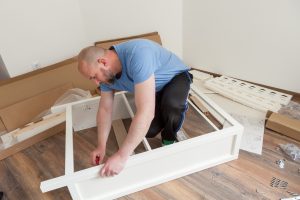Write a Catalogue for Each Moving Box for a Smoother Move

Experts have always said that packing for a move is one of the most daunting tasks. People often don’t know where to start or how to organise their items, making the experience even more stressful.
Labelling moving boxes using permanent markers has long been an excellent tip for making moving houses easier. However, simply writing “kitchen items” or “bedroom items” on the packing boxes may not be enough.
To ensure a smoother long-distance move, it is recommended that you create an inventory for each cardboard box and affix it to the outside of the box for quick reference.
Creating an inventory for moving boxes will save you time and effort when unpacking. This is especially important if you are moving many items or large boxes that look alike across multiple rooms in your new house.
When writing the inventories, include what type of item the cardboard boxes contain, a rough estimate of how many items it holds, and any unique identifiers such as serial numbers or specific measurements. This will help you quickly identify the moving boxes that may have been misplaced during the move and make it easier to unpack when you arrive at your destination.
Here is a suggested list of items you could include in each moving box, organised by room:
- Kitchen: dishes, pots and pans, utensils, small appliances, cooking tools, food storage containers, trash cans, cleaning supplies
- Bedroom: clothes, shoes, bedding, towels, laundry baskets, hangers
- Bathroom: toiletries, medicine, makeup, hair care products, cleaning supplies
- Living room: furniture, books, DVDs, CDs, video games, decorations, throw pillows and blankets
- Office: documents, office supplies, laptop, printer, computer equipment
- Garage: tools, outdoor equipment, sports gear, car supplies
- Miscellaneous: sentimental items, photo albums, artwork, crafts, first aid kit
It’s vital to sort per area or sector because it will enable you to identify the box and its contents quickly. Labelling your boxes with a comprehensive catalogue of items is a great way to stay organised during the move, save time when unpacking, and ensure no item is left behind. With this method, you can ensure that your move is as smooth as possible!
To make the moving process smoother, it can also be helpful to use a permanent marker and label each box with its contents and the room it belongs in at the new location. You could also create a master list of all the items in each box and their corresponding box number to make it easier to keep track of everything.
To create a catalogue for your move, you can follow these steps:
How do you start to make a catalogue for your move?
- Gather your supplies: You’ll need a notebook or a document on your computer to record your catalogue and a pen or pencil to write down the items. You might also want stickers or labels on hand to mark the boxes as you pack them.
- Start packing: As you pack each box, take the time to make a list of all the items it contains. Be as specific as possible, including details like each item’s brand, model, and size. This will make it easier to find specific items later on.
- Label each box: As you finish packing each box, label it with a brief description of its contents, such as “kitchen” or “bedroom.” You can also use a numbering system to keep track of your boxes, such as “Box 1” or “Box 2.”
- Record the contents of each box: As you label each box, record the box’s contents in your catalogue. You can do this by listing each item on a separate line, or you can group similar items (e.g., “dishes,” “pots and pans,” “utensils”). Include the box number and room it belongs in at the new location.
- Keep your catalogue handy: Once you’ve finished packing, keep your catalogue in a safe and easily accessible place, such as your purse or laptop bag. You can reference it as needed during the move and unpacking at your new home.
Following these steps, you can create a comprehensive catalogue to help you stay organised and track all your items during the moving process.
What is the advantage of making a catalogue if I’m labelling boxes anyway?
There are a few advantages to creating a catalogue in addition to labelling your boxes:
- A catalogue can help you keep track of all your items and ensure nothing gets lost during the move. When you label a box, you might only include a general description of its contents, such as “kitchen” or “bedroom.” But with a catalogue, you can create a more detailed list of all the items in the box, which can help you find specific items later.
- A catalogue can make it easier to unpack and organise your new home. When you arrive at your new place, you’ll likely be overwhelmed with all the boxes and might not remember what’s in each one. You can quickly reference the list of items in each box with a catalogue and determine which ones to unpack first.
- A catalogue can also be helpful when selling or donating items you no longer need or want. You can use the catalogue to determine which items you want to keep and which ones you can get rid of, making it easier to declutter your home before the move.
What About Hiring Professional Removalists?
When hiring professional movers for your move, you’ll make their jobs much easier if you have a catalogue of your items.
A moving company can quickly and efficiently load, transport, and unload your items—and they can even use the catalogue to ensure that nothing gets left behind or misplaced during the move.
Creating a catalogue for your move is one of the best moving tips. It can help make the process smoother and more organised—so it’s worth considering if you’re looking to make moving your household items as stress-free as possible.
You can also use a catalogue when calculating the cost of your move since professional removalists might charge by the box or piece of furniture. With a comprehensive catalogue on hand, you’ll be able to get accurate estimates for the cost of your move and avoid any surprise expenses.
Overall, having a catalogue of your items can be incredibly helpful when preparing for a smooth move, both for yourself and the professional removalists helping you relocate. So take the time to create one before packing those fragile items in bubble wrap or packing paper—it will make your move much easier!
Call Optimove interstate removalists at 1300 400 874 for any inquiries about your next long-distance move.


































